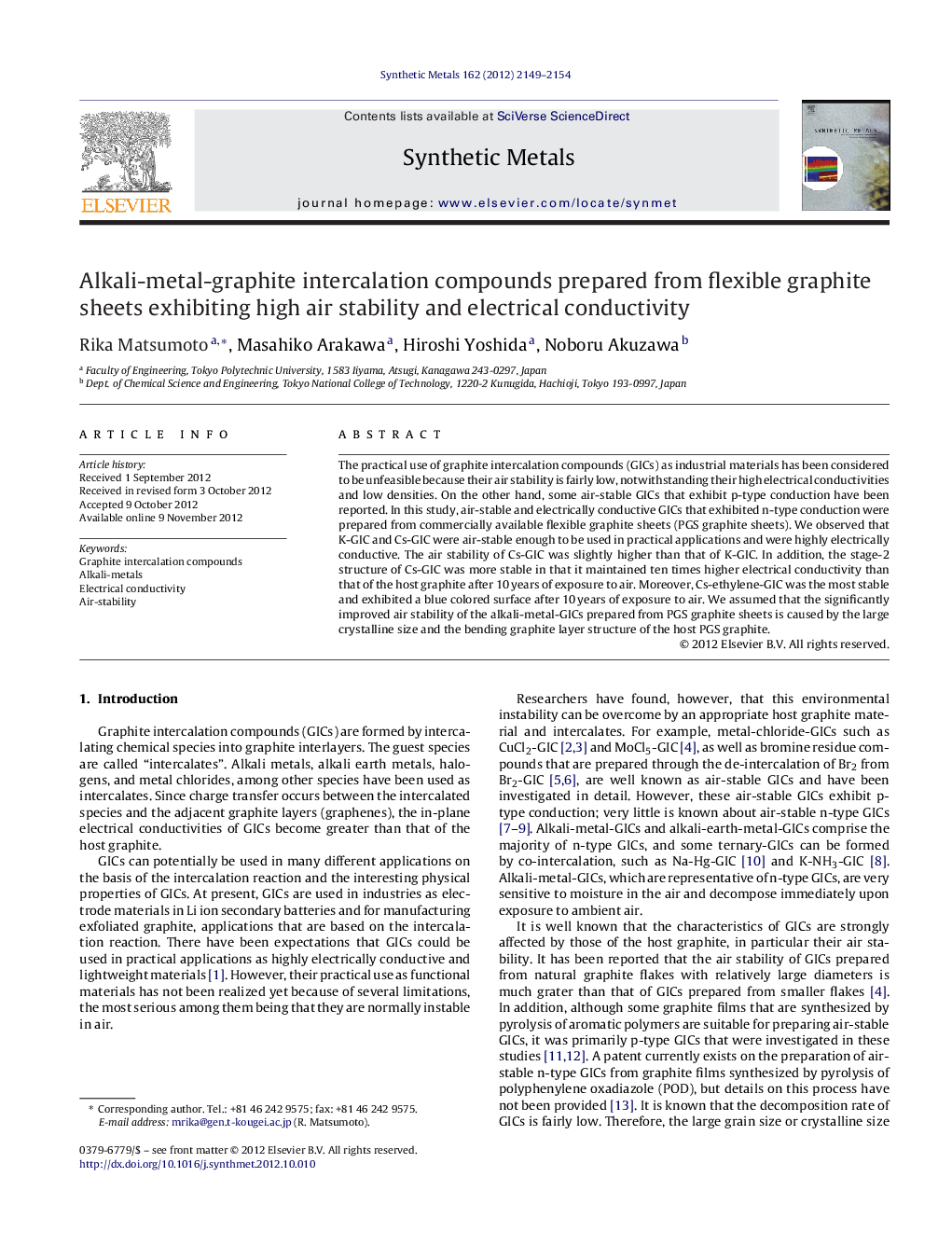| Article ID | Journal | Published Year | Pages | File Type |
|---|---|---|---|---|
| 1441486 | Synthetic Metals | 2012 | 6 Pages |
The practical use of graphite intercalation compounds (GICs) as industrial materials has been considered to be unfeasible because their air stability is fairly low, notwithstanding their high electrical conductivities and low densities. On the other hand, some air-stable GICs that exhibit p-type conduction have been reported. In this study, air-stable and electrically conductive GICs that exhibited n-type conduction were prepared from commercially available flexible graphite sheets (PGS graphite sheets). We observed that K-GIC and Cs-GIC were air-stable enough to be used in practical applications and were highly electrically conductive. The air stability of Cs-GIC was slightly higher than that of K-GIC. In addition, the stage-2 structure of Cs-GIC was more stable in that it maintained ten times higher electrical conductivity than that of the host graphite after 10 years of exposure to air. Moreover, Cs-ethylene-GIC was the most stable and exhibited a blue colored surface after 10 years of exposure to air. We assumed that the significantly improved air stability of the alkali-metal-GICs prepared from PGS graphite sheets is caused by the large crystalline size and the bending graphite layer structure of the host PGS graphite.
Graphical abstractFigure optionsDownload full-size imageDownload as PowerPoint slideHighlights► Air-stable and high electrically conductive n-type GICs were formed. ► Commercially available flexible graphite sheet was most suitable for host graphite. ► The stage-2 structure of Cs-GIC was strikingly stable for 10 years in air. ► The K- and Cs-GIC prepared from flexible graphite are sufficient for practical use.
